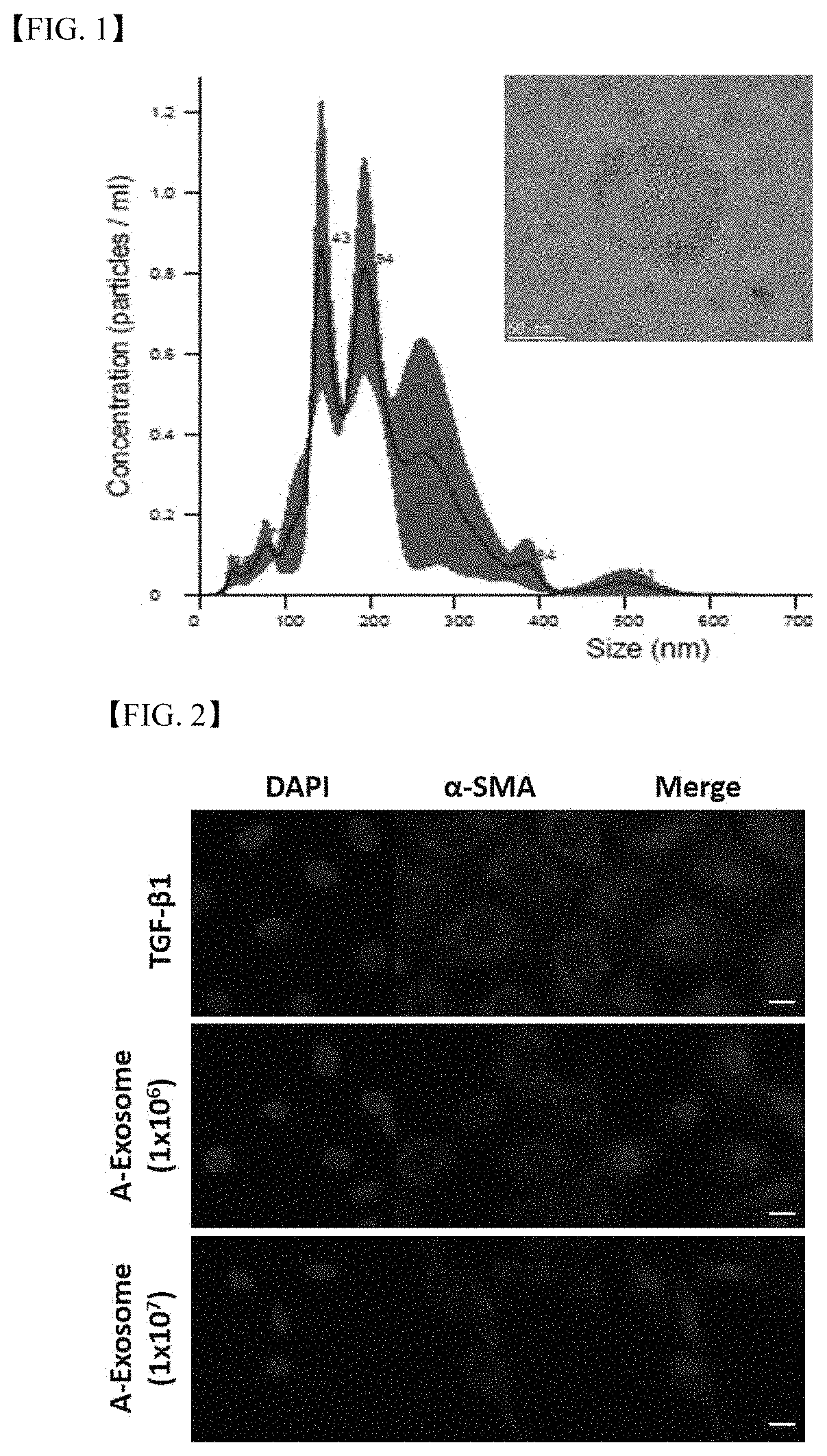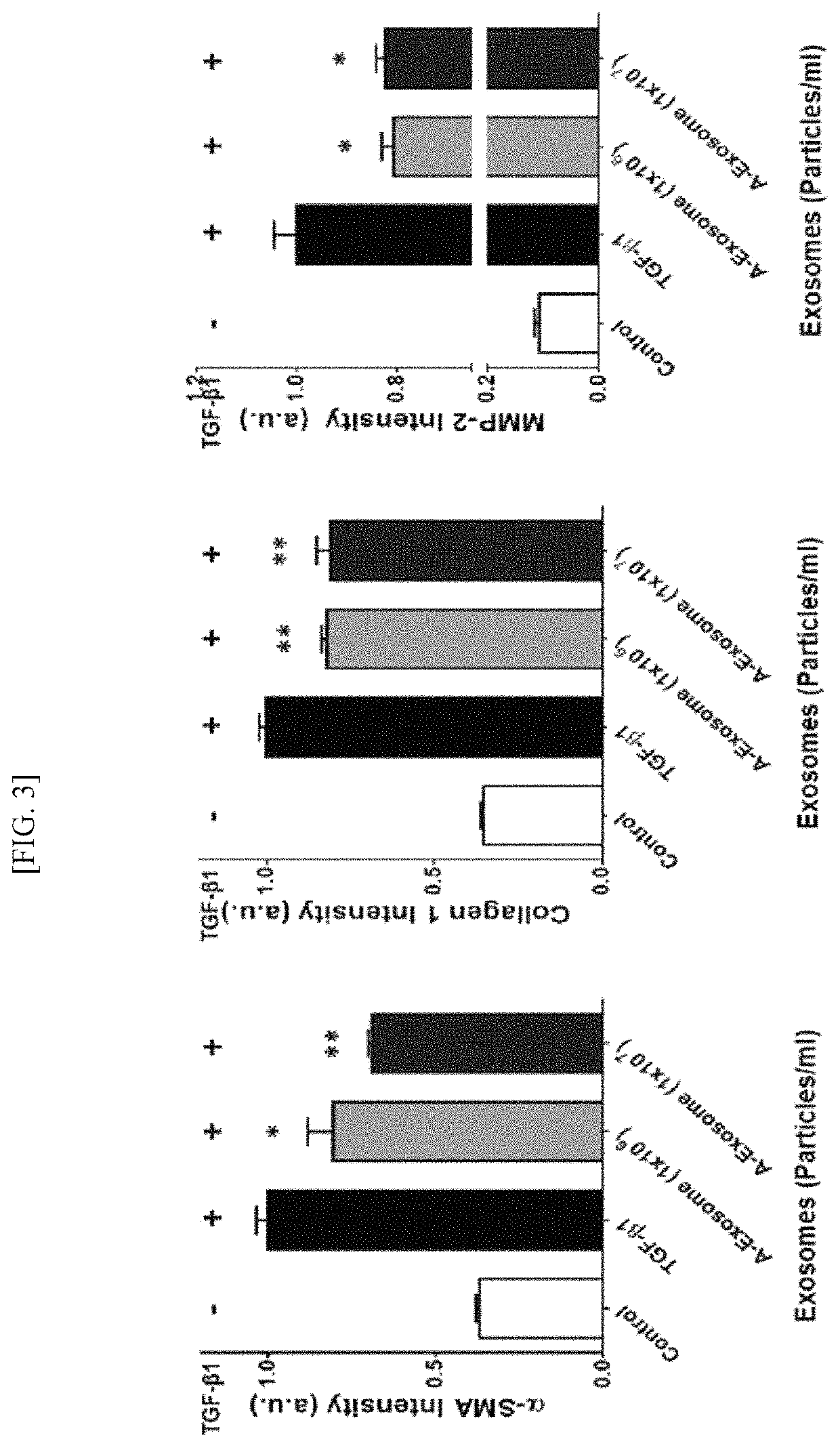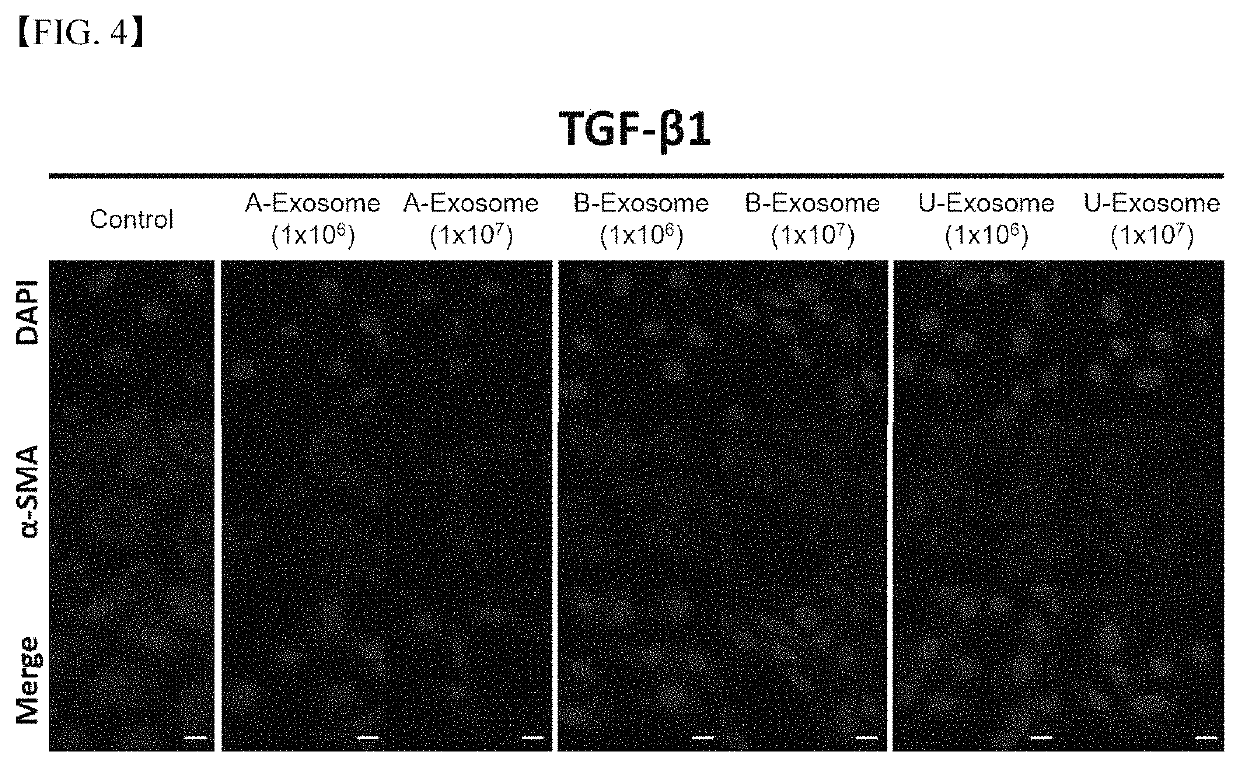Treating liver fibrosis using adipose stem cell-derived exosomes as active ingredient
a technology of liver fibrosis and exosomes, which is applied in the directions of food ingredient functions, medical preparations, unknown materials, etc., can solve the problems of liver transplantation, inability to accurately identify the stem cells which proliferate and differentiate into hepatic cells, and low efficiency of hepatic cell differentiation. achieve excellent results in treating liver fibrosis, excellent absorption rate, and high biocompatibility
- Summary
- Abstract
- Description
- Claims
- Application Information
AI Technical Summary
Benefits of technology
Problems solved by technology
Method used
Image
Examples
example 2
Evaluation of Immunofluorescence and Real-Time Polymerase Chain Reaction of Human Adipose Stem Cell-Derived Exosomes in Human Hepatic Stellate Cell
[0067]In order to confirm the influence of exosomes isolated in Example 1 on a human hepatic stellate cell which was known to largely involved in spouting of collagen and liver fibrosis factors, etc. as activated by liver damage in the real liver fibrosis process, the evaluation of efficacy of anti-fibrosis was progressed using LX-2 that was a related cell line.
[0068]Specifically, in order to confirm the influence of human adipose stem cell-derived exosomes on the expression level of α-Smooth Muscle Actin(α-SMA) that was a fibrosis factor generated from a hepatic stellate cell activated by liver fibrosis, its degree was evaluated using an immunofluorescence method.
[0069]α-SMA is one of factors expressed in an activated hepatic stellate cell, and is known to be expressed in a greater amount as liver fibrosis is induced, and thus in the pre...
example 3
Comparative Evaluation of in Vitro Anti-Fibrosis Efficacy of Human Adipose Stem Cell-Derived Exosomes and Human Other Tissue Stem Cell-Derived Exosomes
[0074]In order to comparatively experiment the excellent anti-fibrosis effect of the human adipose stem cell-derived exosomes according to the present embodiment compared to human other tissue stem cell-derived exosomes, by preparing exosomes isolated from human bone-marrow stem cells (Bone-marrow stem cell exosome: B-Exosome) and human umbilical-cord stem cells (Umbilical-cord stem cell exosome: U-Exosome), respectively, they were comparatively evaluated through the immunofluorescence and real-time polymerase chain reaction experiments of Example 2.
[0075]As a result, as shown in FIG. 4, it was observed that the human adipose stem cell-derived exosomes significantly decreased the fluorescence of α-SMA than the human umbilical-cord stem cell-derived exosomes or human bone-marrow stem cell-derived exosomes, and it was confirmed that suc...
example 4
Evaluation of in Vivo Distribution Movements of Human Adipose Stem Cell-Derived Exosomes in Liver Fibrosis Animal Model
[0078]In order to evaluate in vivo distribution movements of human adipose stem cell-derived exosomes, human adipose stem cell-derived exosomes, which were labeled with DiR; 1,1′-Dioctadecyl-3,3,3′,3′-Tetramethylindotricarbocyanine lodide fluorescent materials, were dispersed in a culture solution 100 μL and injected into the tail vein in normal model and liver fibrosis-induced model mice. Then, after 24 hours, mice of each group were dissected and major organs were excised to confirm fluorescence thereof.
[0079]As a result, as shown in FIG. 6, it was confirmed that the largest amount of exosomes per unit area were accumulated in both normal model and liver fibrosis-induced model, and the larger amount of exosomes were confirmed in the liver fibrosis model than the normal model. This is thought to be due to a large number of hepatic stellate cells differentiated duri...
PUM
 Login to View More
Login to View More Abstract
Description
Claims
Application Information
 Login to View More
Login to View More - R&D
- Intellectual Property
- Life Sciences
- Materials
- Tech Scout
- Unparalleled Data Quality
- Higher Quality Content
- 60% Fewer Hallucinations
Browse by: Latest US Patents, China's latest patents, Technical Efficacy Thesaurus, Application Domain, Technology Topic, Popular Technical Reports.
© 2025 PatSnap. All rights reserved.Legal|Privacy policy|Modern Slavery Act Transparency Statement|Sitemap|About US| Contact US: help@patsnap.com



